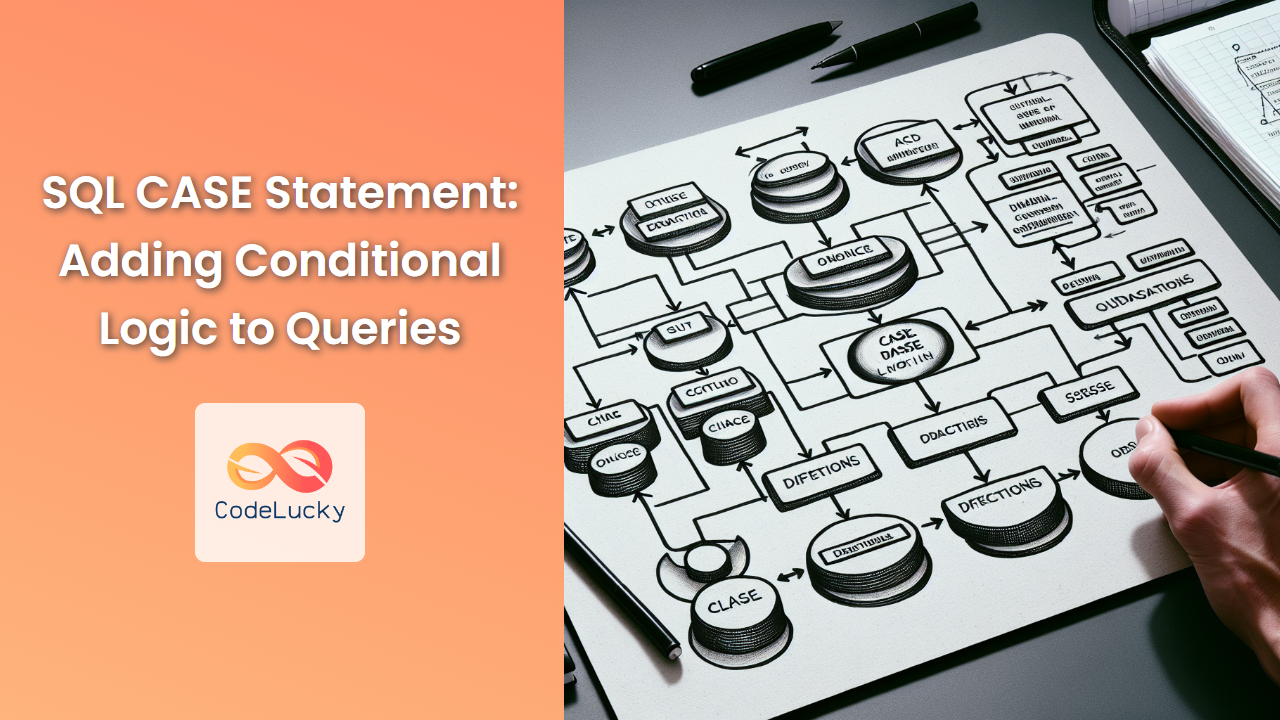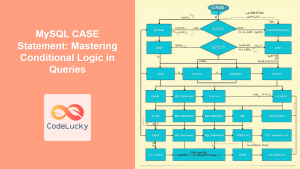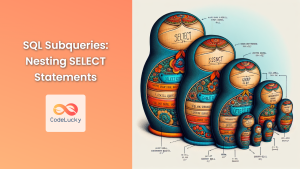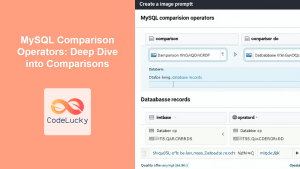SQL is a powerful language for managing and manipulating relational databases, but sometimes you need to add a bit of conditional logic to your queries. That's where the SQL CASE statement comes in handy. This versatile tool allows you to incorporate if-then-else logic directly into your SQL queries, opening up a world of possibilities for data analysis and reporting.
Understanding the SQL CASE Statement
The CASE statement in SQL is akin to an if-then-else statement in other programming languages. It allows you to specify conditions and return different values based on whether those conditions are met. There are two main types of CASE statements:
- Simple CASE statement
- Searched CASE statement
Let's dive into each type and explore how they can enhance your SQL queries.
Simple CASE Statement
The simple CASE statement compares an expression to a set of simple expressions to determine the result. Here's the basic syntax:
CASE expression
WHEN value1 THEN result1
WHEN value2 THEN result2
...
ELSE result
END
Let's look at a practical example to see how this works in action.
📊 Suppose we have a table called employees with the following data:
| employee_id | first_name | last_name | department | salary |
|---|---|---|---|---|
| 1 | John | Doe | Sales | 50000 |
| 2 | Jane | Smith | Marketing | 60000 |
| 3 | Mike | Johnson | IT | 75000 |
| 4 | Sarah | Williams | HR | 55000 |
Now, let's use a simple CASE statement to categorize employees based on their departments:
SELECT
employee_id,
first_name,
last_name,
department,
CASE department
WHEN 'Sales' THEN 'Revenue Generator'
WHEN 'Marketing' THEN 'Brand Builder'
WHEN 'IT' THEN 'Tech Guru'
ELSE 'Support Staff'
END AS role_category
FROM
employees;
This query will produce the following result:
| employee_id | first_name | last_name | department | role_category |
|---|---|---|---|---|
| 1 | John | Doe | Sales | Revenue Generator |
| 2 | Jane | Smith | Marketing | Brand Builder |
| 3 | Mike | Johnson | IT | Tech Guru |
| 4 | Sarah | Williams | HR | Support Staff |
As you can see, the CASE statement has added a new column role_category that categorizes employees based on their department. This can be incredibly useful for reporting and analysis purposes.
💡 Pro Tip: The simple CASE statement is great when you're comparing a single column or expression against a list of possible values.
Searched CASE Statement
The searched CASE statement is more flexible than the simple CASE statement. It allows you to specify a series of conditions and return values when the first condition is met. Here's the basic syntax:
CASE
WHEN condition1 THEN result1
WHEN condition2 THEN result2
...
ELSE result
END
Let's use our employees table again to demonstrate a searched CASE statement.
SELECT
employee_id,
first_name,
last_name,
salary,
CASE
WHEN salary < 55000 THEN 'Entry Level'
WHEN salary >= 55000 AND salary < 70000 THEN 'Mid Level'
WHEN salary >= 70000 THEN 'Senior Level'
END AS salary_category
FROM
employees;
This query will produce the following result:
| employee_id | first_name | last_name | salary | salary_category |
|---|---|---|---|---|
| 1 | John | Doe | 50000 | Entry Level |
| 2 | Jane | Smith | 60000 | Mid Level |
| 3 | Mike | Johnson | 75000 | Senior Level |
| 4 | Sarah | Williams | 55000 | Mid Level |
In this example, we've used a searched CASE statement to categorize employees based on their salary levels. This type of categorization can be invaluable for HR analysis and reporting.
💡 Pro Tip: The searched CASE statement is more versatile and can handle complex conditions involving multiple columns or expressions.
Advanced Uses of CASE Statements
Now that we've covered the basics, let's explore some more advanced applications of CASE statements in SQL.
Using CASE in Aggregate Functions
CASE statements can be used within aggregate functions to perform conditional aggregation. This is particularly useful when you need to count or sum based on certain conditions.
Let's say we want to count the number of employees in each salary category:
SELECT
COUNT(*) AS total_employees,
SUM(CASE WHEN salary < 55000 THEN 1 ELSE 0 END) AS entry_level,
SUM(CASE WHEN salary >= 55000 AND salary < 70000 THEN 1 ELSE 0 END) AS mid_level,
SUM(CASE WHEN salary >= 70000 THEN 1 ELSE 0 END) AS senior_level
FROM
employees;
This query will produce:
| total_employees | entry_level | mid_level | senior_level |
|---|---|---|---|
| 4 | 1 | 2 | 1 |
This single query gives us a quick overview of how many employees fall into each salary category.
Using CASE for Data Transformation
CASE statements can be powerful tools for data transformation. Let's say we want to create a new column that combines first and last names, but formats them differently based on the department:
SELECT
employee_id,
CASE
WHEN department IN ('Sales', 'Marketing') THEN UPPER(last_name) || ', ' || first_name
ELSE first_name || ' ' || last_name
END AS formatted_name,
department
FROM
employees;
This query will result in:
| employee_id | formatted_name | department |
|---|---|---|
| 1 | DOE, John | Sales |
| 2 | SMITH, Jane | Marketing |
| 3 | Mike Johnson | IT |
| 4 | Sarah Williams | HR |
Here, we've used a CASE statement to format names differently based on the department, showcasing how CASE can be used for on-the-fly data transformation.
Nested CASE Statements
For more complex logic, you can nest CASE statements within each other. Let's create a more nuanced employee categorization based on both department and salary:
SELECT
employee_id,
first_name,
last_name,
department,
salary,
CASE
WHEN department IN ('Sales', 'Marketing') THEN
CASE
WHEN salary < 55000 THEN 'Junior'
WHEN salary >= 55000 AND salary < 70000 THEN 'Associate'
ELSE 'Senior'
END
ELSE
CASE
WHEN salary < 60000 THEN 'Associate'
WHEN salary >= 60000 AND salary < 80000 THEN 'Specialist'
ELSE 'Expert'
END
END AS employee_level
FROM
employees;
This query produces:
| employee_id | first_name | last_name | department | salary | employee_level |
|---|---|---|---|---|---|
| 1 | John | Doe | Sales | 50000 | Junior |
| 2 | Jane | Smith | Marketing | 60000 | Associate |
| 3 | Mike | Johnson | IT | 75000 | Specialist |
| 4 | Sarah | Williams | HR | 55000 | Associate |
This nested CASE statement allows for more granular categorization based on multiple criteria.
Best Practices and Considerations
While CASE statements are powerful, it's important to use them judiciously. Here are some best practices to keep in mind:
-
🎯 Readability: Keep your CASE statements as simple and readable as possible. If they become too complex, consider breaking them into separate queries or using CTEs (Common Table Expressions).
-
🚀 Performance: Complex CASE statements, especially when used in WHERE clauses, can impact query performance. Always test your queries with realistic data volumes.
-
📊 Maintainability: If you find yourself repeating the same CASE logic in multiple queries, consider creating a view or a user-defined function to encapsulate this logic.
-
🧪 Testing: Always thoroughly test your CASE statements with edge cases to ensure they behave as expected.
-
📝 Documentation: When using complex CASE statements, add comments to explain the logic. This will help future you (and your colleagues) understand the query's purpose.
Conclusion
The SQL CASE statement is a versatile tool that allows you to add conditional logic to your queries. Whether you're categorizing data, performing conditional aggregation, or transforming data on-the-fly, CASE statements can significantly enhance your SQL toolkit.
By mastering both simple and searched CASE statements, and understanding advanced applications like using CASE with aggregate functions or for data transformation, you'll be well-equipped to handle a wide range of data analysis challenges.
Remember, the key to effective use of CASE statements lies in balancing their power with readability and performance considerations. With practice and careful application, you'll find CASE statements becoming an indispensable part of your SQL repertoire.
Happy querying! 🚀💻📊



















